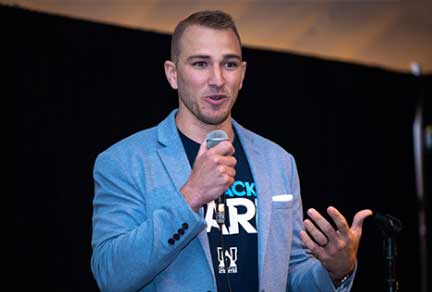A hybrid model supports globally diverse site participation for a retrospective cancer study
By Laura O’Donnell, RWD Solutions Senior Director
As sponsors continue to explore the potential of real-world data (RWD) across the drug development lifecycle, best practices are emerging. Understanding how to incorporate RWD in clinical trials is becoming imperative as global regulatory bodies increasingly encourage its use and as sponsors strive to reduce the burden on sites and patients. Our experience at Parexel has recognized that thoughtful study planning and feasibility assessment are paramount, along with agile and dynamic study delivery supported by smart technology. These were clear takeaways from a recent retrospective observational study for patients with metastatic breast cancer.
Conducting a detailed feasibility assessment of data sources
In this case, our client asked Parexel to conduct a study to determine the prevalence of metastatic breast cancer to assess the standard of care, treatment patterns, and outcomes in the real world. The premise was that the research questions could be answered by data collected in hospital electronic medical record (EMR) systems and accessed through a process known as EMR extraction.
The client had identified hospitals for participation in the study, which included sites ranging across the Americas, Europe, and Asia Pacific. Because this was a prevalence study, we needed to ensure appropriate geographic diversity in the regions where the patients were to be enrolled, requiring that data be gathered from a wide variety of countries and sites across the globe. But could EMR extraction be performed in all of these global sites? Would this approach be feasible?
It was our responsibility to make that determination. Working through the study design and defined endpoints, our team conducted a detailed feasibility assessment of the data sources to determine if EMR data was available and accessible and to identify potential sources of bias. However, we were aware that, in many cases, data sources do not always have the critical variables required to assess study endpoints. Further, data is often missing, incomplete, or unstructured, or EMR extraction is prevented by country, regional, or institutional restrictions.
Adjusting to a hybrid model to allow for more flexible data collection
As feasibility reports arrived from targeted data sources, we quickly recognized that patient data could not be extracted from some of the EMR systems. Yet these sites were willing to participate, and we did not want to exclude them – nor to undermine geographic diversity, a key element of the study.
As a team, we decided to adjust our operational plan from an EMR extraction–only model to a hybrid study model, allowing flexibility in the method of data collection. Some sites would be able to enter their data into a traditional electronic data capture (EDC) system with electronic case report forms, while others could extract their data according to the initial plan. The data was ingested into an RWD platform, mapped and aggregated into a common data model, and combined for a study-level joint analysis.
By establishing end-to-end operational models supporting diverse RWD study designs and regions, we succeeded in enrolling more than 800 patients in 11 countries through this hybrid data-collection approach, meeting our commitment to the study delivery timeline – demonstrating the agility and expertise of our team.
Establishing a pathway for exploring RWD methodologies
The pragmatism of this approach extends beyond this important study. The hybrid model enables sponsors to begin exploring EMR extraction technologies or other data-collection methodologies while managing the risks that often emerge during feasibility assessment. A built-in backup plan ensures that no sites or data are missed during the process, enabling participation of sites that may lack full technical capabilities. And sponsors can expand study diversity and patient centricity, using data that has already been collected to avoid taxing patients who are already undergoing treatments. The hybrid model is widely applicable, including natural history studies, patient registries, studies with external comparator arms, and post-marketing commitment studies.
Partnerships that are real-world ready
Parexel’s experience encompasses all Real-world study types, with established processes and study models supporting RWD study design and delivery. Parexel’s expansive RWD solutions and access to RWD sources, such as EMR and claims databases, informs regulatory decision-making, powers study design, and supports faster, targeted site and patient identification. The efficiencies and insights gained from RWD align with our mission to help deliver new treatments and therapies to patients across the globe.
Our dedicated expert team of data strategists, data engineers, biostatisticians, and epidemiologists fully understand the complexities of this evolving science. Consider partnering with Parexel for all your study needs using RWD and real-world evidence. We are here to help you navigate the process, meet your goals, and achieve success.
Related Insights
Blog
Studying rare cancer patient populations using integrated genomic and real-world data
Aug 30, 2023
Article
Australia: A highly attractive environment for drug development
Aug 24, 2023
Article
Navigating the challenges of large, international Phase III breast cancer trials
Jul 29, 2025
Video
The science and practice of ethnobridging
May 17, 2023
Blog
Removing barriers through pragmatic clinical trials
Oct 12, 2023
Article
Can Chinese Phase I data from the West accelerate China drug development?
Mar 17, 2021
Article
Australia: Infrastructure and Innovations for Clinical Trials
Aug 28, 2023
Blog
Ensuring future success in a new market by delivering a robust safety database solution
Aug 4, 2023
Webinar
Assessing appropriate use of ECAs in clinical trials
May 28, 2023
Webinar
Adaptive strategies for more efficient, data-rich and patient-friendly trials
May 28, 2023
Blog
Preparing for a new era in European Market Access
Jul 22, 2022
Playbook
Are you using real-world evidence?
Feb 1, 2023
Related Insights
Blog
Studying rare cancer patient populations using integrated genomic and real-world data
Aug 30, 2023
Article
Australia: A highly attractive environment for drug development
Aug 24, 2023
Article
Navigating the challenges of large, international Phase III breast cancer trials
Jul 29, 2025
Video
The science and practice of ethnobridging
May 17, 2023
Blog
Removing barriers through pragmatic clinical trials
Oct 12, 2023
Article
Can Chinese Phase I data from the West accelerate China drug development?
Mar 17, 2021
Article
Australia: Infrastructure and Innovations for Clinical Trials
Aug 28, 2023
Blog
Ensuring future success in a new market by delivering a robust safety database solution
Aug 4, 2023
Webinar
Assessing appropriate use of ECAs in clinical trials
May 28, 2023
Webinar
Adaptive strategies for more efficient, data-rich and patient-friendly trials
May 28, 2023
Blog
Preparing for a new era in European Market Access
Jul 22, 2022
Playbook
Are you using real-world evidence?
Feb 1, 2023



